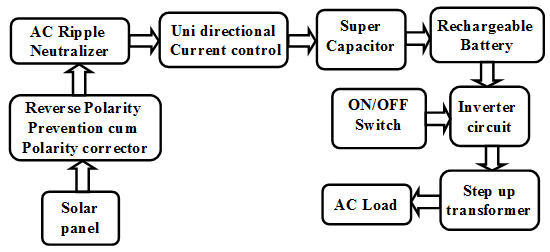Control Techniques To Amend The Performance Of Dc-Dc Converters Project Conclusion:
We know that a DC-DC Converters has various applications like in dc drives, subway cars, trolley trucks, battery driven vehicle etc. DC-DC Converters are used to obtain a regulated power supply from an unregulated power supply. But due to controlling of switch and some other factors the performance of these converters is not good there are some drawbacks as bandwidth limitation, high settling time, discontinuous outputs, poor dynamic performance, bad transient performance, and Existence of right-half-plane-zero (RHP) in CCM Operation of boost, flyback and cuk Converter etc. so from many decades there are various effort is done to improve the performance of DC-DC Converters.
Performance can be improved by proper selection of values of L, RL, C, RC and the duty ratio for switch. Various techniques are used to control the switch as pulse width modulation, pulse skipping modulation, pulse frequency modulation, Current control techniques, Voltage control techniques, current injected control, feedback compensation, capacitive energy transfer principle, New Energy transfer principle (coupling of inductor), Dual mode control, sliding mode control, Tri-state Boost Converter etc.
In the literature it has shown that in general, voltage across the capacitor (output voltage) and current through the inductor (inductor current) are two variables usually considered in the closed feedback loop of a dc-dc converter. However, because of the regulatory purpose, the former one is indispensable irrespective of the control schemes, while the latter one is considered for further improving the dynamic performance.
The voltage mode control (VMC) uses the output voltage as the only feedback variable; while in addition, the current mode control (CMC) uses the inductor current. In recent past, apart from these, other variables, like current through the load (load current), derivative of the output voltage etc., have been considered. Nevertheless, the objects (performance and efficiency) in all the cases are more or less the same.
Currently a current controlled Tri-state boost converter are used to improve the performance of boost converter and it reduces the settling time of reference voltage transient and load transient upto 0.45ms and 0.09ms respectively which was for voltage mode control 7ms and 3ms respectively. It also increases the band of current loop upto 28 kHz which was 5 kHz for current mode control. Hence this technique is better than any other technique.

